Plastic food samples are a part of modern Japanese culture. You will find elaborately made food samples in show windows at restaurant entrances in Japan. It is a good way to show what kind of food the restaurant serves for prospective customers. There are usually price signs placed next to the samples, so it is easy to choose what you want to eat before entering a restaurant.
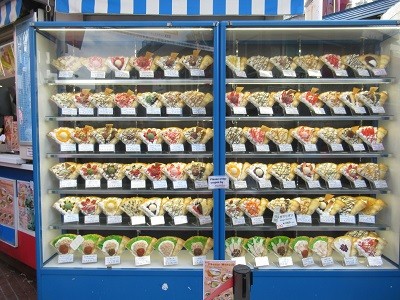
The custom started for local customers, but it turned out to be very useful for foreign tourists as well. Even when the menu is written in English, you may not able to imagine what the food is like. A sample tells you exactly what it looks like. You can also take a picture of the dish you want, and show it to the waiter when you order to avoid miscommunication.
History of Food Samples in Japan
The history of food samples goes back almost one century. The first restaurant that started to use food samples was Shirokiya Department Store in 1923. They opened their first restaurants in 1901. It was the first department store that had restaurants on its premises. At first, they put real food in front of the restaurant, but it deteriorated and changed color as time passed making it decidedly less appetizing. Mister Sudo first only manufactured human figures for scientists, and he added restaurant food samples to his repertoire. The first faux food versions were made of wax and colored with oil paint.
In 1932, mister Iwasaki started a company that specialized in making food samples in Osaka. He lent them to restaurants and they spread through Japan quickly. In 1939, when WW2 started, the military controlled the use of paraffin. This ingredient was an indispensable addition to the wax to make samples. He went back to his home town Gujo Hachiman, and researched how to make them without using paraffin. He succeeded. And he survived by making food samples to offer to the victims of the war at funerals.
In the 1970s, they developed samples with a synthetic resin, which solved the problem of wax degradation and color changes. Also, synthetic resin is harder, so it is easier to transport.
Where Can You Buy Food Samples?
Now, a food sample is a popular souvenir to buy in Japan. Many foreign tourists are surprised to see such realistic food samples. They often touch them to verify if it is real or not. If you are in Tokyo, you will find several food sample shops in Kappabashi which is known as kitchen street. Other than food samples, you will find cooking equipment, tableware, furniture, staff uniforms, and so on. People who want to start a restaurant can buy everything there.
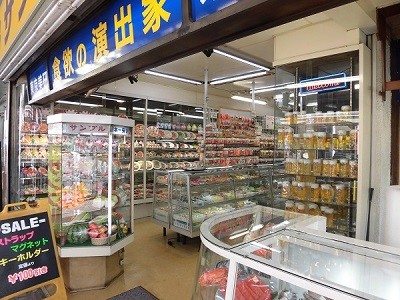

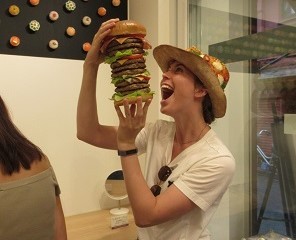
If you are in Osaka, you will find similar shops in Sennichimae-Doguyasuji. Other than these places, now, many souvenir stores sell them in major sightseeing spots such as Asakusa and Tokyo Skytree. In one Asakusa shop, you can hold the sample and take Insta-worthy pictures with the“Pizza Hat” and pretend to eat a huge hamburger!
Making Plastic Food Samples
You can try to make food samples by yourself. Iwasaki is the biggest food sample company and they offer sample-making programs. Sample Village Iwasaki in Gujohachiman, Gifu Prefecture is a huge facility. They exhibit many samples and have a large workshop. They have a small workshop in Kappabashi, Tokyo, too, on the second floor of the food sample shop. The name of the shop is Ganso Sample-Ya (Original Sample Shop).
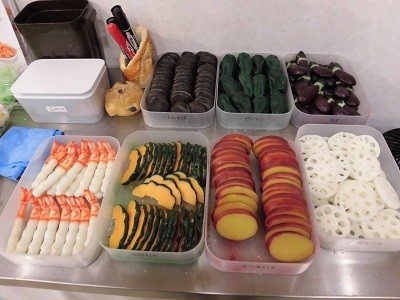
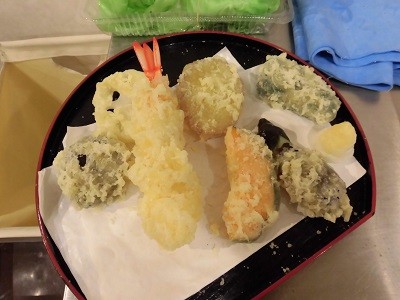
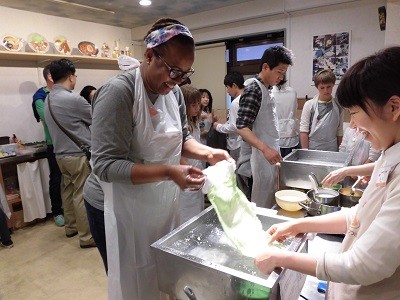
You will first wear an apron and listen to the explanation from the instructor. Because you will use hot water and wax, you need to be careful not to burn your hands. Then you can choose from several different types of food such as lettuce, tempura, ice cream, and noodles. It is interesting to see how the raw material changes into a food sample. For example, if you want to make lettuce, you spread green and white melt wax in warm water. Then you roll them softly like you’re making a ball. That’s all. It really looks like real lettuce! It is a lot of fun to try it and you can bring them home as a unique souvenir.
Your Japan Tour
As seasoned Japan experts, we can help you create your perfect Japan tour including a plastic food sample-making experience. Check out our group tours and private tours, or contact us to start planning your unforgettable holiday to this fascinating country full of once-in-a-lifetime experiences, culture, history, nature, and delicious food!